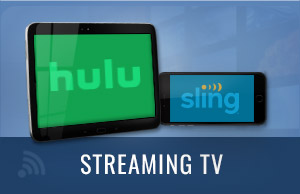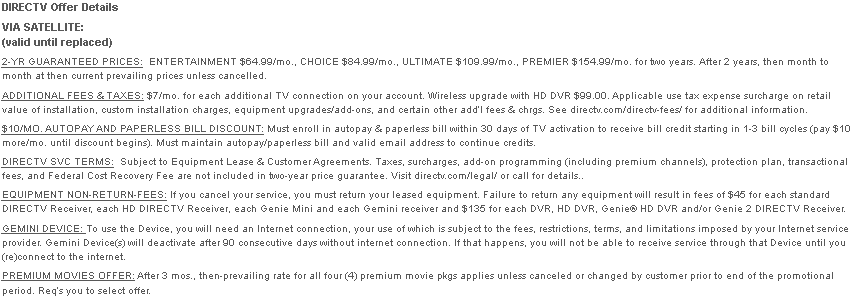Review of Free, Live and Paid Streaming Services (2024)

Compared to cable or satellite, streaming TV has a few advantages. First and foremost, their programming plans are radically slimmed down. Known as "skinny bundles", they mostly just give you the channels you want with very little fluff. As a result, they typically cost quite a bit less. Secondly, since it's all delivered via the internet, there's no waiting for installation or a bulky receiver. Finally, most streaming plans have no contract, so you're free to cancel whenever you want.
Nothing's perfect, of course. The main downsides with streaming are lack of live TV and having a sufficiently fast internet connection. Both issues are improving as more providers add live channels to their lineups and, of course, internet speed and access gradually get better over the years. Overall, streaming TV is a great way to pick and choose exactly what you want...and when.
Paid streaming services
For most streaming plans with original or live TV content, you'll usually need to pay a subscription fee. As noted above, almost all those packages are month-to-month (no contracts or cancellation fees). Conveniently, most also offer a free trial to let you kick the virtual tires before you commit. Here are the top paid streaming services:
Streaming Live TV
Paid streaming providers can be broken up into two main categories: Live TV and On Demand. The former gives subscribers more traditional access to live channels (TBS, CBS, ESPN, etc). Access to those channels means streaming providers need to constantly negotiate licensing (carriage) fees with broadcasters. As those fees don't tend to decrease over time, it puts pressure on the retail price subscribers have to pay. If those carriage fees end up getting too high, prudent streaming providers typically drop that particular channel, at least temporarily, to save on costs (for them and subscribers alike). The end result is a live TV plan that occasionally drops/suspends a channel but, overall, is much more sustainable long-term... and affordably priced.
Provider comparisons
Free streaming services
Who doesn't like free? The trade-off with free streaming is ads. Free streaming operators need to offset bandwidth costs somehow and playing a few ads per program generally works well for everyone. Of course, YouTube has nearly perfected ad-supported videos but as most of their content is user-generated, it doesn't really fit in this article. A better example is Tubi, the Fox-owned free streaming service. It features a ton of free content from Fox, ABC/Disney, NBCUniversal, etc. Every 10 to 30 min, ads of about 30 sec rotate in. Not super intrusive or annoying. A thriving ecosystem with over 50 million monthly users seem to agree. Overall, the most popular free streaming services include:
- Tubi - as mentioned, one of the most popular free streaming destinations. No registration or login required though logging in helps you save your watching history and get better AI recommendations.
- Pluto TV - owned by Viacom, Pluto also has a ton of free content and doesn't require registration. It's great for watching classic shows (original MacGyver anyone? :) but doesn't have as much current programming as the others on this list.
- Freevee - originally IMDB TV and now owned by Amazon, it has one of the largest TV and movie libraries, all free. Of course, it's ad-supported and for super popular programming you'll see more ads than usual.
- Crackle - one of the original free streaming providers (went live in 2004), it probably has the best assortment of original, in-house programming. Again, no registration required.
- Sling Freestream - launched a few years ago, it's Sling TV's free alternative. Since Sling already has live TV in their paid plans, they actually include a bit of it in Freestream as well. A growing amount of original content as well.
Streaming channels
Since there are generally less channels in streaming plans, each and every one is important. That's the main reason we're profiling as many as possible. Plenty of channels have their own dedicated app or website that let you watch directly (after you login with your provider's credentials). Some of the bigger ones have even spun off into their own subscription plan where folks pay a few bucks a month for just that channel. That seems to be a tough path, though. Case in point, CNN launched CNN+ in 2022 but promptly canned it a few months later due to lack of demand.
Either way, being able to use a dedicated app is almost always the best way to watch a channel. It's tailored to the programming and overall theme. You'll usually also have access to plenty of on-demand content that you can watch on your time.
 TBS
TBS
- Best: Hulu
- Free stream (trial)
- Stream TBS
 TNT
TNT
- Best: DTV Stream
- Free stream (trial)
- Stream TNT
 ESPN
ESPN
- Best: Hulu
- Free stream (trial)
- Stream ESPN
 FOX
FOX
- Best: FuboTV
- Free stream (trial)
- Stream FOX
 CNN
CNN
- Best: Hulu
- Free stream (full)
- Stream CNN
 MLB Network
MLB Network
- Best: FuboTV
- Free stream (trial)
- Stream MLB Network
Frequently Asked Questions
Can I bundle paid streaming services together and save?
Sometimes, it depends on current partnerships. For example, you can get Hulu Live with Disney+ and ESPN (on one bill) and save at least $10/mo. However, most of the streaming "bundles" are really just letting you get the second service as an order add-on for the regular retail price (i.e., negligible savings).
What's the best place to get coupons for streaming?
It mostly depends on the time of year and provider. AMEX runs a bunch of exclusive deals with most of the major streamers. Other utility/club-type organizations do as well (Verizon, AARP, AAA, etc). Overall, though, if you have the time, waiting for seasonal discounts or longer free trials direct from the provider is usually your best bet.
I signed up years ago. Why does my bill keep going up?
I hear ya. Inflation, mostly. For the live streamers, it's also the rising cost of licensing content.









